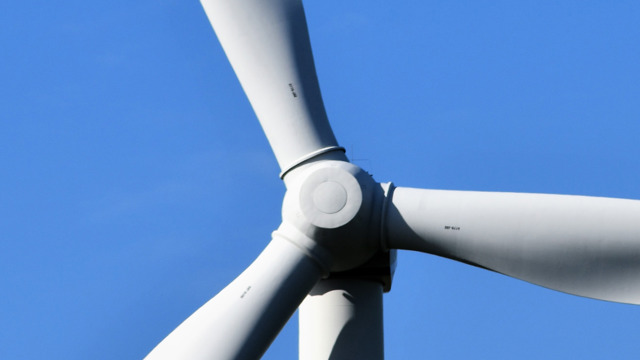On Friday 21 October 2022, the Ministry of Business, Innovation and Employment (MBIE) released the long-awaited Terms of Reference (ToR) for the Government's New Zealand Energy Strategy (Energy Strategy). The Energy Strategy will support Aotearoa New Zealand's transition to a low emissions economy, as part of the Government's wider initiative to achieve net-zero emissions by 2050. It is an important, and much anticipated, process for the sector.
Given the energy sector's contribution to New Zealand's overall emissions,[1] and the sector's importance to the economy and energy security, the development of the Energy Strategy will affect, and be of interest to, a range of organisations and individuals outside the sector.
The Energy Strategy will be developed in two phases:
- Targeted consultation on phase one will occur early to mid-2023, followed by public consultation on phase one findings and phase two preliminary issues in late 2023.
- Final targeted consultation on phase two will occur in early to mid-2024, before the Energy Strategy is published in late 2024.
This consultation process provides a key opportunity for individuals and organisations to provide valuable input, which will assist in shaping the Energy Strategy going forward.
Background to the Energy Strategy
A New Zealand Energy Strategy was first recommended by the Climate Change Commission in its 2021 Ināia tonu nei: a low emissions future for Aotearoa report, and was committed to in May 2022 as part of the Government's Emissions Reduction Plan. The purpose of the Energy Strategy is to "address strategic challenges in the energy sector, and signal pathways away from fossil fuels".[2]
MBIE envisions that the Energy Strategy, which will cover all forms of energy across supply and demand, will provide roadmaps towards net-zero objectives while balancing competing needs and providing certainty for the sector, consumers and industry.
To this end, MBIE, as the lead agency, has established a cross-agency steering group to guide the development of the Energy Strategy. The Council of Energy Regulators (consisting of the Commerce Commission, Electricity Authority, Energy Efficiency and Conservation Authority, Gas Industry Company, and MBIE) will ensure alignment in this work.
The Terms of Reference
The ToR set out the objectives, phases and scope of the Energy Strategy. It supports improvement of all three limbs of the trilemma (equity, security and environmental sustainability), and aims to ensure:
-
energy affordability and energy equity for consumers;
-
the energy system transitions at the pace and scale required to support a net-zero 2050;
-
energy supply is secure and reliable, including as we adapt to the effects of climate change and in the face of global shocks; and
-
the energy system supports economic development and productivity growth aligned with the transition.
Development of the Energy Strategy will occur in two phases: exploring what's possible (phase one) and charting the path (phase two).
Phase one aims to develop an understanding of New Zealand's energy potential, limitation and opportunities. This phase will utilise modelling and research to analyse different pathways for the sector across the following areas:
-
ensuring energy affordability and energy equity;
-
using energy more efficiently and managing demand for energy;
-
reducing emissions and energy use in industry;
-
ensuring the electricity system is ready to meet future needs; and
-
reducing our reliance on fossil fuels and supporting the switch to low emissions fuels.
Phase two will set the direction for New Zealand's energy system through the transition to net-zero. It will compare future potential scenarios to identify key decisions, including:
-
what is required to make the potential future scenarios happen, especially any fundamental choices or mindset changes for New Zealand;
-
what is required to safeguard the wellbeing of consumers, in particular energy affordability and energy equity;
-
the implications of different pathways for energy emissions;
-
the potential for the energy system to contribute to the decarbonisation of the economy;
-
the implications of different pathways for affordability and the international competitiveness of businesses and industry;
-
seizing economic opportunities presented by the transition;
-
what different pathways mean for reliability, security of supply, and New Zealand's resilience and energy independence; and
-
what opportunities exist to improve on all three limbs of the energy trilemma the transition.
The Energy Strategy will then set out what government action is required to achieve the Strategy, and provide direction to guide decisions by communities, businesses and the energy sector.
A framework will also be developed to assist with future decisions. It will address the role of government and when it should intervene; any gaps and how these will be filled; and what further action may be needed to meet New Zealand's emissions budget.
The ToR provide a wide scope for addressing energy sector emissions, with nothing explicitly out of scope of consideration. This is consistent with the diversity of the sector and the variable contributions of its industries to Aotearoa New Zealand's emissions.[3]
The ToR envision that both Government work programmes (such as the New Zealand Battery Project, Government Investment in Industry Decarbonisation and resource management reform) and key sector initiatives (such as the Boston Consulting Group The Future is Electric report[4]) will inform the Energy Strategy.
Although, given myriad other reform and review processes in recent years (including ongoing work by the Electricity Authority), and the risk of "review fatigue", active sector participation in consultations will be vital in ensuring that the final Energy Strategy recognises the sector's importance and diversity; addresses the key challenges and substantive issues that the sector is facing through the 2020s; and provides the best pathway towards net-zero.



